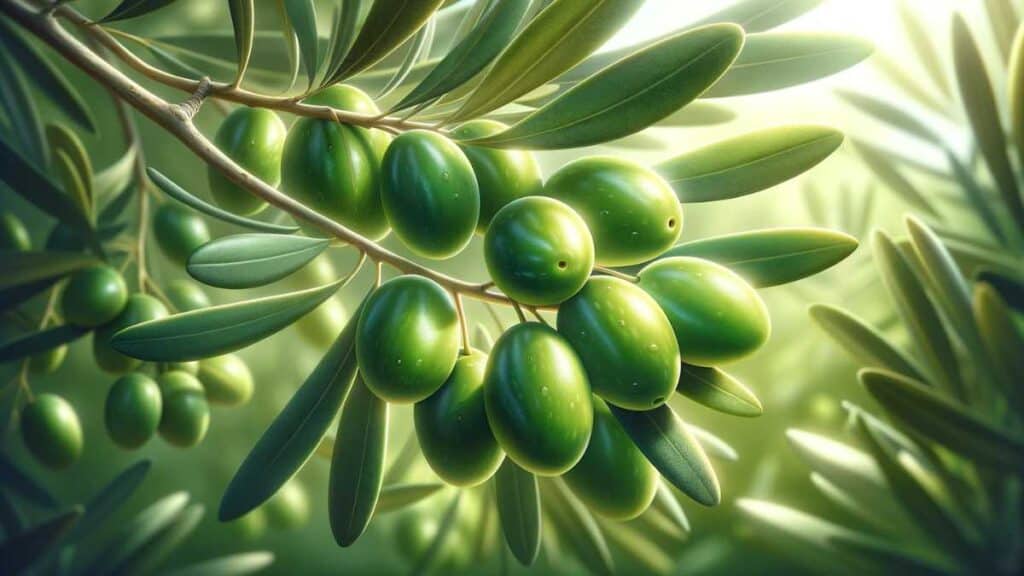Is Olive a Fruit or a Vegetable?
Olive Knowledge is a part of Amazon Associates. As an Amazon Associate, we earn from qualifying purchases. Read our Affiliate Disclosure to learn more.
Have you ever thought of olives and what they are? These savory, tasty fruits packed with oleic acid, a valuable component of olive oil, are often called vegetables.
But is this the right way to refer to them? Is olive a fruit or a vegetable? In this article, we will find out what olives are and discuss a bit of their growth cycle.
Key Takeaways:
- Olives are fruits, not vegetables, belonging to the drupes or stone fruit family.
- Culinary practices often mislabel some fruits as vegetables due to their savory taste.
- Scientifically, fruits develop from flowers and contain seeds, unlike vegetables.
- Olive trees produce flowers, leading to fruit development, with olives ripening in various colors.
- Other commonly misclassified fruits include tomatoes, cucumbers, and squash, often used in salads and soups.
Are Olives Fruits or Vegetables?

Although olives are not sweet like most fruits, they are called fruits. In fact, these savory-tasting Mediterranean fruits are part of the drupes or stone fruit family. Other fruits from this family are avocados, mangoes, cherries, and plums.
Olives are called stone fruits because they have small or large stones in them called pits. Another reason they are called fruits is that they grow from the flowers of the olive plant.
Despite these facts, some people mistake olives for veggies. Let’s clear this doubt by finding out what differentiates fruits from vegetables.
Fruits vs. Vegetables – What’s The Difference?

Fruits and vegetables may be hard to classify when you look at them from a culinary perspective. This is because culinary experts such as chefs usually refer to some fruits as vegetables.
There is also the fact that some products, such as olives, lack the sweetness associated with fruits. Therefore, their savory taste makes people mistakenly categorize them as veggies.
However, when you look at it from a scientific standpoint, it’s easy to set fruits apart from vegetables.
A fruit is the edible part of a plant or tree that grows from a flower and contains seeds such as cucumbers, tomatoes, and bell peppers. This is different from a vegetable, which is the edible part of a plant that does not develop from seeds. Some examples are rhubarbs and carrots.
Looking at the olive tree and how it produces olives is another way to understand why olives are fruits.
The Olive Tree: Source of Olives

Olive trees are robust trees that can grow to heights of 35 feet. They thrive in subtropical regions and start their growth cycle in Spring after a dormancy period from October to January.
The beginning of the olive growth cycle is signified by a flower induction period that begins in February. This is followed by the release of flower buds in March and full-blown flower growth in May.
Fruit development in olive trees begins in June when petals start falling from the flowers. In July and August, the pits in the developing olive fruits begin to harden, paving the way for the fleshy part of the fruit to grow. This continues until the olives are fully grown, ripening from green to red, purple, and then black.
Olive Growth Cycle: From Green to Black

When you look at olives in their different colors during growth, they may seem like fruits that come from different trees. The truth is what sets these olives apart is that they are harvested from olive trees at different times of maturity.
Olive fruits are green or yellow at the beginning of the ripening cycle. At this point, they have a bitter, grassy taste due to their high tannin and phenolic content.
Some farmers prefer to harvest olives when they are green due to their firm texture and grassy taste. Olives harvested during this time, such as the Nocellara and Manzanilla varieties, usually make delicious bright green, extra virgin olive oil.
Green or yellow olives slowly turn red and then purple or black as they ripen. At this point, they have a soft texture and a nutty, sweet flavor. An example of such olives is Kalamata olives.
Farmers who prefer to harvest ripe black olives must wait to pick them until they ripen on the tree. This is because olives do not ripen after they are harvested. However, regardless of the color of olives during harvesting, they make excellent oil, especially through cold pressing.
Other Fruits Disguised as Vegetables

Apart from olives, there are other fruits that are mistaken for vegetables. These are fruits with a savory taste, such as tomatoes, that we often add to salads. Corn, pumpkins, cucumbers, peas, green beans, and squash are more examples of foods we refer to as vegetables that are actually fruits.
What makes these fruits disguised as vegetables hard to classify? Well, their appearance is a major factor.
While you would expect fruits to be round and fleshy, some, like green beans, are slim and stringy. There is also the idea that these fruits, such as corn and squash, are traditionally used in soups and vegetable salads. This makes most chefs refer to them as vegetables, causing us to do the same.
But if you focus on the fact that fruits come from flowers and contain seeds, you will overlook these minor details. This is what makes olives fruits and not veggies.
Bottom Line
If you’ve been referring to olives as vegetables, now you know they are fruits. These fruits are widely cultivated worldwide for their phytonutrient and oleic acid content.
Olives also produce flavorful extra virgin olive oil that you can use for many purposes in your home. So, the next time you are looking for a fruit with healthy fats to add to your diet, try olives!
Chefs wouldn’t use olives in gourmet cooking if they weren’t so great.
